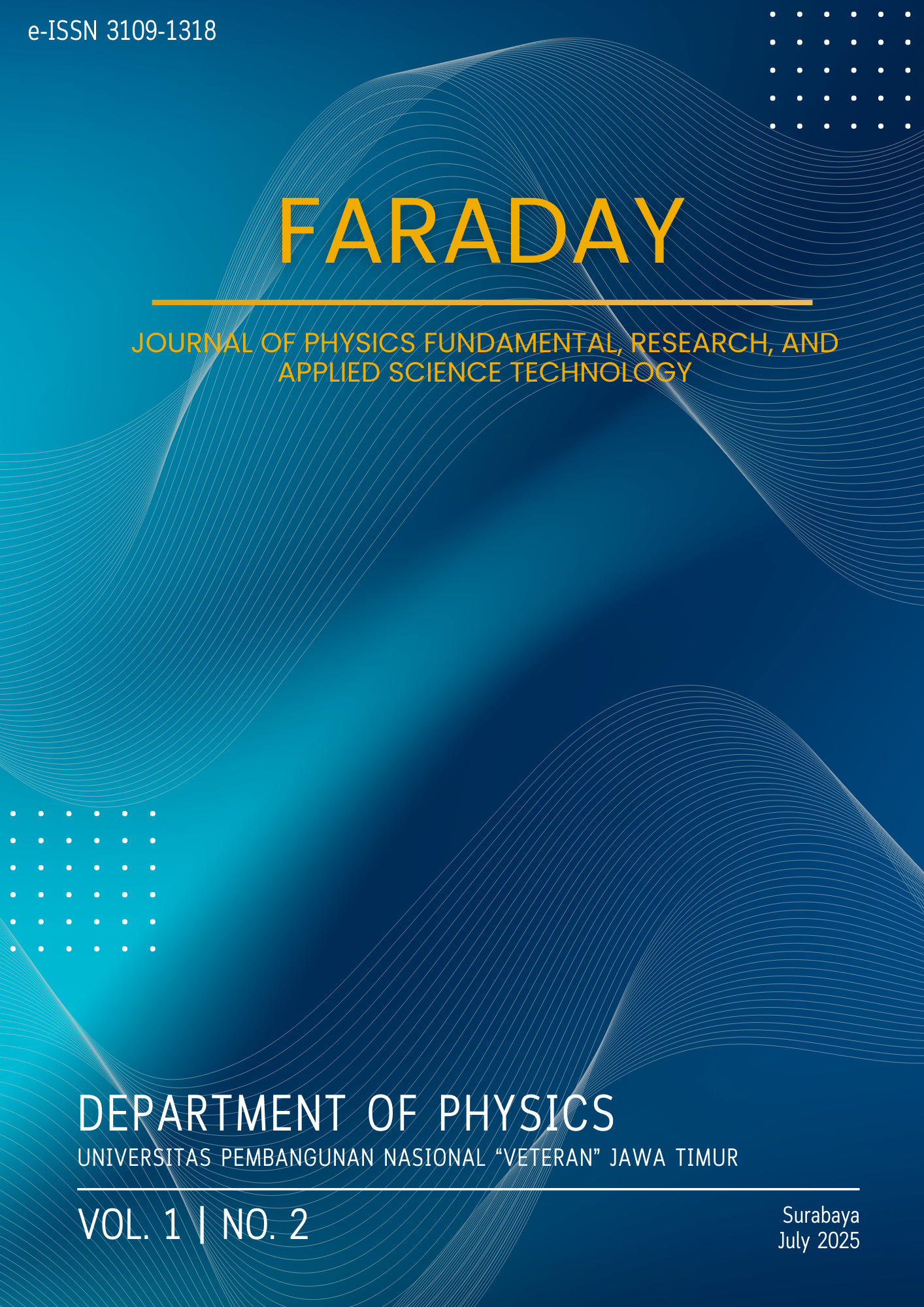Review: Characterization of Optical and Structural Properties of Carbon Nanodots (CNDs) from Biomass Waste by Microwave Method
DOI:
https://doi.org/10.33005/faraday.v1i2.14Keywords:
Carbon Nanodots, Synthesis, Microwave Method, Optical Characterization, Biomass WasteAbstract
This review focuses on examining the synthesis and characterization of Carbon Nanodots (CNDs) from the utilization of Tandan Kosong Kelapa Sawit (TKKS) using the microwave method as an environmentally friendly approach. The resulting CNDs were characterized for their optical and structural properties to evaluate their potential application in the field of biosensors. The synthesis process involves carbonizing TKKS at 500℃ for 3 hours, followed by activation using a microwave at 450 Watts for 15 minutes. UV-Vis characterization shows an absorption peak at 280 nm, which indicates n-π* (C=O) and π-π* (C=C). Meanwhile, FTIR characterization aims to determine the presence of the carbonyl C=O functional group at 1990,98 cm-1 and the aromatic C=C bond at 1416,2 cm-1. The CNDs from TKKS exhibit photoluminescent properties and surface functional groupss that enhance adsorption performance and chemical reactivity. This research offers an efficient and sustainable method for synthesizing CNDs, while also being a breakthrough in utilizing biomass wate, particularly TKKS. The findings have the potential for developing carbon materials in environmental and energi applications.
Downloads
Downloads
Published
Issue
Section
License
Copyright (c) 2025 Ima Putriana, Nenni Mona Aruan, Reffany Choiru Riskiarna, Nur Aini Fauziyah, Arum Sinda Santika

This work is licensed under a Creative Commons Attribution 4.0 International License.














